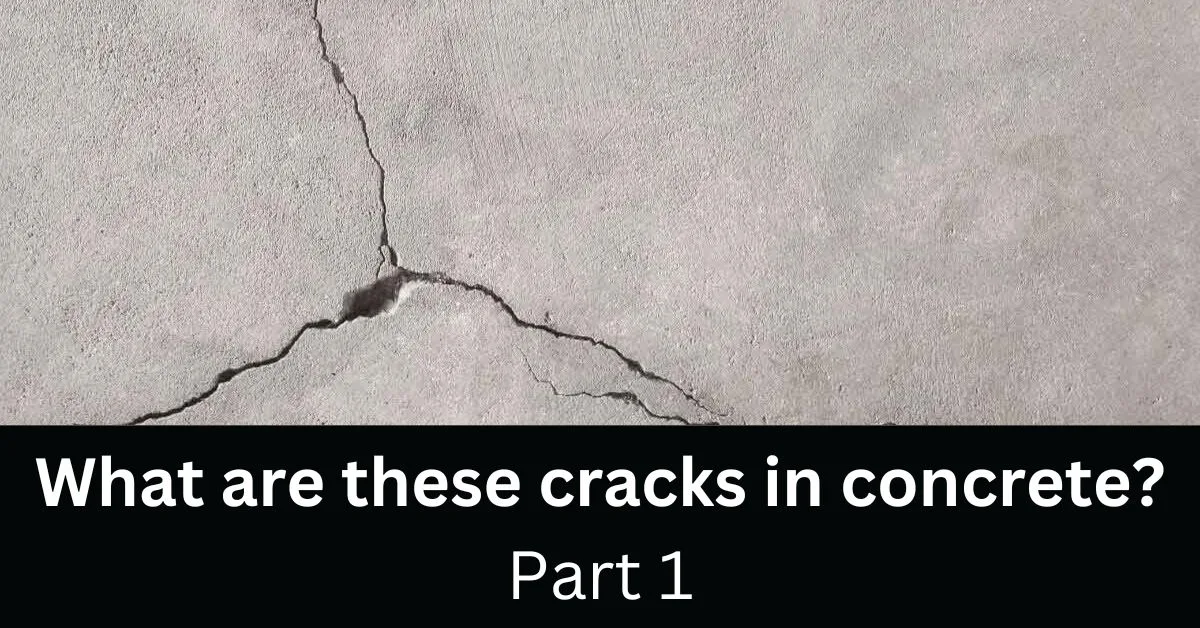In this series of articles, we are going to discuss what concrete cracks are, what causes them, and how to control these cracks in concrete.
Table of Contents
Introduction to cracks in concrete
Concrete is one of the most widely used construction materials in the world. However, it is prone to cracking due to various reasons. Concrete cracks are not only unsightly but also can compromise the structural integrity of the concrete. It is essential to control concrete cracks to prevent further damage and maintain the durability of the concrete structure. In this article, we will provide a detailed overview of what concrete cracks are and their types, the importance of controlling concrete cracks, and a brief overview of the causes of concrete cracks.
Explanation of what concrete cracks are and their types
Concrete cracks can be defined as discontinuities or breaks in the surface or inside the concrete structure. Cracks can occur due to various reasons such as shrinkage, settlement, thermal changes, and overloading. The types of concrete cracks include plastic shrinkage cracks, drying shrinkage cracks, settlement cracks, expansion cracks, and structural cracks. Plastic shrinkage cracks occur when the concrete surface dries faster than the underlying concrete. Drying shrinkage cracks occur due to the loss of water from the concrete. Settlement cracks occur due to uneven settling of the subgrade or the concrete itself. Expansion cracks occur due to the expansion of concrete caused by temperature changes. Structural cracks occur due to excessive loads or inadequate reinforcement.
Importance of controlling concrete cracks
Controlling concrete cracks is essential to maintain the structural integrity of the concrete structure. Uncontrolled cracks can lead to water infiltration, which can compromise the durability of the concrete structure. Cracks can also create tripping hazards, which can be dangerous for pedestrians. It is also essential to control cracks to maintain the aesthetic appearance of the concrete structure.
Brief overview of the causes of concrete cracks
Concrete cracks can occur due to various reasons such as improper curing, inadequate reinforcement, improper joint placement, temperature changes, and overloading. Improper curing can lead to plastic and drying shrinkage cracks. Inadequate reinforcement can lead to structural cracks. Improper joint placement can lead to uncontrolled cracking. Temperature changes can cause expansion and contraction of the concrete, leading to cracks. Overloading can cause structural cracks in the concrete.

Understanding the Causes of Concrete Cracks
Concrete is known for its durability, but it is not impervious to cracking. There are various causes of concrete cracks, which can include curing and water-cement ratio, joints and construction practices, and temperature and environment. Understanding these causes can help prevent concrete cracks, leading to longer-lasting structures.
Curing and Water-Cement Ratio
Proper curing is essential to ensure that the concrete develops the desired strength and durability. Improper curing can lead to surface cracks, crazing, and reduced strength. The water-cement ratio also plays a vital role in concrete durability. When the water-cement ratio is too high, the concrete can become weak, leading to cracks. In contrast, when the water-cement ratio is too low, the concrete can be too stiff, resulting in cracks.
- Importance of Proper Curing
Proper curing helps prevent cracks by allowing the concrete to develop its full strength and durability. Concrete should be kept moist and at a consistent temperature for at least seven days after pouring to ensure proper curing.
- Relationship between Water-Cement Ratio and Concrete Cracks
The water-cement ratio affects the strength and durability of the concrete, and if it is not properly balanced, it can lead to cracks. A low water-cement ratio can result in shrinkage cracks, while a high water-cement ratio can cause the concrete to become weak and more prone to cracking.
Joints and Construction Practices
Joints are essential in concrete structures as they allow for movement and prevent cracking. There are different types of joints, including construction joints and cold joints, which have different purposes.
- Differences between Construction Joints and Cold Joints
Construction joints are formed when concrete is poured in sections, while cold joints occur when fresh concrete is placed over cured concrete. Construction joints are created intentionally to ensure that each section of concrete is properly bonded, while cold joints are accidental and can lead to weakened areas in the structure.
- Best Practices for Constructing Joints to Avoid Cracks
To prevent cracks from forming in concrete, joints should be properly designed and placed in the structure. Joint spacing should be determined based on the thickness of the concrete and the expected temperature changes. Proper joint construction and placement can help reduce the likelihood of cracks forming in the concrete.

Temperature and Environment
Temperature and environmental conditions can also contribute to concrete cracking. Extreme heat or cold can cause the concrete to expand or contract, leading to cracks.
- How Heat and Hot Weather Affect Concrete
High temperatures can cause concrete to expand, leading to cracks if there is not enough space for the concrete to expand. Hot weather can also cause the concrete to dry too quickly, leading to surface cracks.
- How Cold Weather and Frost Heave Cause Cracks
In cold weather, the moisture in the ground can freeze, causing the soil to expand and put pressure on the concrete. This pressure can cause the concrete to crack. Frost heave can be prevented by proper subgrade preparation and insulation.











